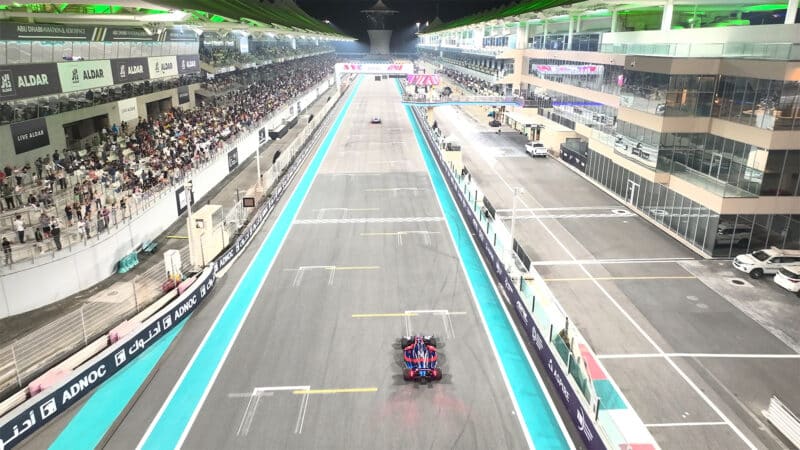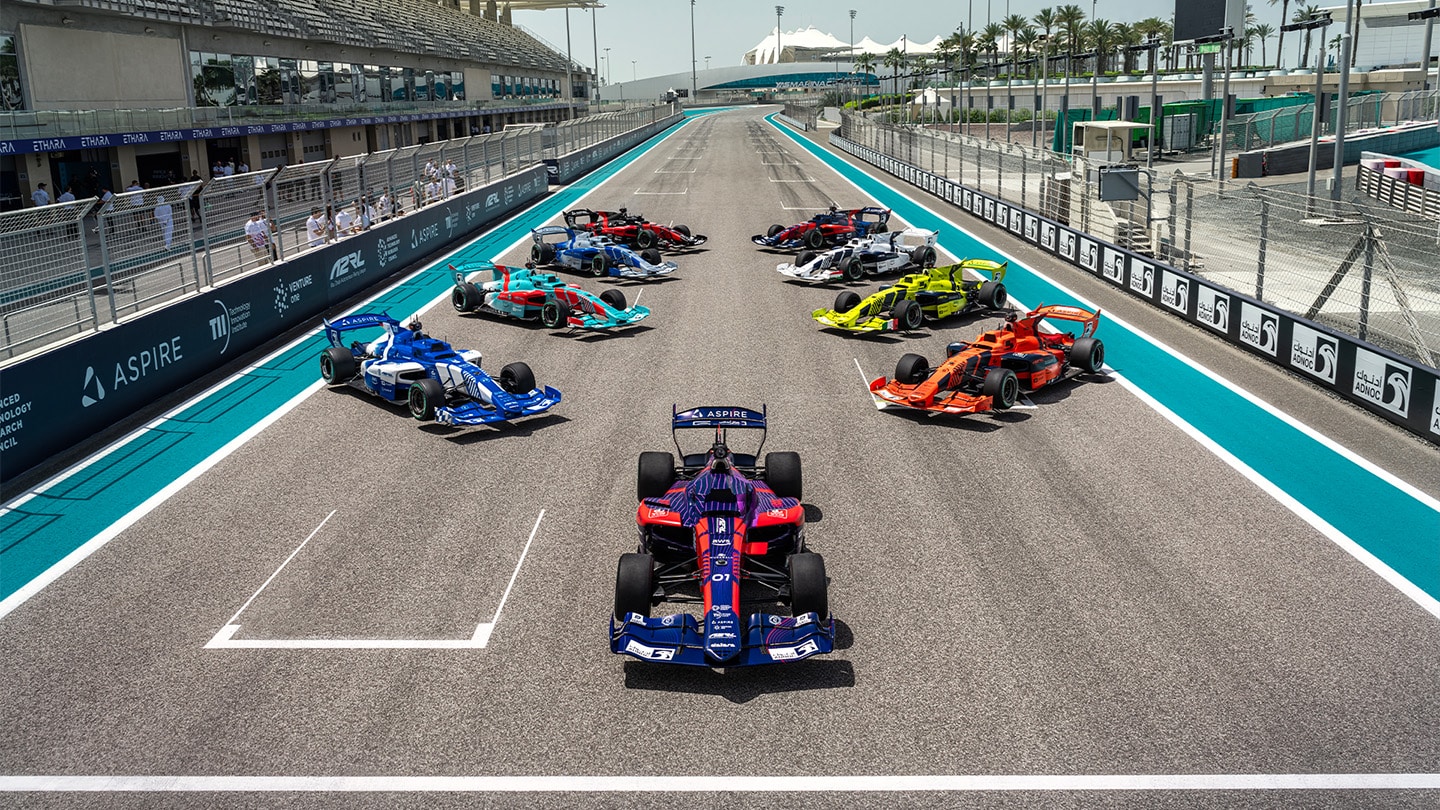Will AI replicate the mind of a racing driver? Can lines of code be infused with the competitive fire, the instinct for a promising gap, the sense of a car’s razor-edged limit, or the precise positioning to frustrate rivals?
Not anytime soon is the short answer, after last weekend’s debut Autonomous Racing League event which was billed as the first ever open race between driverless cars. The grand final saw one car spin on the first green flag lap and the remaining three AI machines grind to a halt behind them.
If this was what the series meant by its claim to be “redefining racing entertainment”, then the crowd gave its instant verdict: thousands of spectators in the stands stood up and left early, as humans emerged from the pitlane to recover the cars.
“We are exploring a huge uncharted space right now”
Earlier in the day, they had already watched a watered down version of the much-heralded “Man vs Machine” showdown, where a duel between former Red Bull F1 driver Daniil Kvyat and an AI racing car turned out to be a tame series of demonstration laps.
And before that came a series of practice sessions and qualifying, where one AI machine drove itself into a barrier and another drove straight into a second car. Just getting around the circuit was a challenge for some teams, let alone any attempt at racecraft.
It could have been an event to show once and for all whether wheel-to-wheel competition between AI cars would offer an entertaining alternative to human racers. But it had the distinct feel of a test session for technology that’s far from ready. And that really is what it was.
“We are exploring a huge uncharted space right now,” Dr Giovanni Pau, one of the team principals and technical director of Abu Dhabi’s Technical Innovation Institute (TII), told Motor Sport. “This technology is today at its infancy. It’s like a baby that was born yesterday, starting to put the first footsteps.”
The Abu Dhabi-backed Autonomous Racing League (A2RL) was announced just a year ago, and it stuck rigidly to its ambitious timetable of holding its first race on Saturday, despite setbacks that have delayed progress.
It began with ten teams made up of some of the brightest minds in artificial intelligence, each with an identical Super Formula-based car fitted with 50 sensors, including cameras, radar and lidar. These supply 15TB of data per lap — equivalent to 3m songs — which must be processed and assessed by the AI software ‘stack’. The stack was trained by machine learning — data from simulators and real-world laps by Daniil Kvyat was fed into the software so it could identify the patterns to circuit driving.
Each team then took that basic AI and developed it to improve their car’s performance with the goal of pitting it against the others on track at last weekend’s event — racing without a single human input within a $2m prize pool up for grabs.
But the goal went beyond hosting a racing series to accelerate development of AI, with benefits for the automotive industry and beyond. This was meant to become a new form of racing, to capture a young generation of supporters watching live streams via YouTube and Twitch and — understandably — to give sponsors a return for their money. In addition, the grandstands at Yas Marina were filled with 10,000 spectators, thanks to the free tickets offered on the series’ website.

Thousands flocked to the Yas Marina circuit for a world-first in AI racing
A2RL
Scepticism was already rife in the run up to the race, and the Racing League — which has no further events scheduled this year — doesn’t appear to have dispelled many doubts by continuing with last weekend’s race.
The cars only began track-testing six weeks ago, and with different amounts of experience between the teams, made up of universities and technology companies, there was a wide range of performance. Friday’s test runs brought a taste of what was to come as PoliMove — a university team from Italy that had previously competed in other autonomous racing series — set lap times which hovered around 2 minutes. The slowest runners were at least double that.
“The amount of track time that we have is very limited,” Lawrence Walter, team principal of A2RL US-based racing team Code 19 told Motor Sport in Abu Dhabi. “If you added up all the track time that we actually had for testing [over the last two months] it’s a number that’s in the hours. So trying to develop from scratch an AI race car driver in just a short amount of time and test it with the limited test time that we have and get to the point where we’re competitive is incredibly difficult. Many of our competitors have been racing a long time autonomously. And so for the new teams coming in the challenge is even greater.”

Eugen Boglaru is an AI aficionado covering the fascinating and rapidly advancing field of Artificial Intelligence. From machine learning breakthroughs to ethical considerations, Eugen provides readers with a deep dive into the world of AI, demystifying complex concepts and exploring the transformative impact of intelligent technologies.


